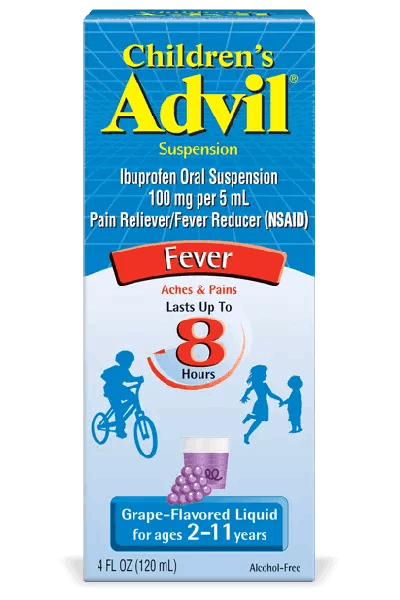What Are Back Spasms and What Causes Them?
Backache
Back pain comes in many different forms. If you are experiencing sharp, sudden bouts of cramping in your back, you may be experiencing a back spasm: a common form of back pain that affects your muscles and can happen to just about anybody. Learn more about back spasms, what causes them and how you can treat them at home.
What Are Muscle Spasms?
Muscle spasms, which are commonly referred to as muscle cramps, happen when your muscles involuntarily contract and make uncontrollable movements.1 A muscle spasm can occur in any muscle, but you are most likely to experience them in your thighs, calves, feet, hands, arms, and abdomen.1 Muscle spasms can range from a mild, uncomfortable twitch to an intense, severe feeling of pain.1 The pain can last anywhere between a few seconds to several minutes and can recur multiple times.1
How Do Muscle Spasms Affect the Back?
Because muscle spasms can occur in any muscle, they can also cause painful contractions in the muscles in your back. The muscles in your back can be categorized into three separate groups: superficial, intermediate and intrinsic.2 Each type of back muscle help you move your entire body and provide support for your spine.2 If these muscles contract, you may experience back pain that can move to other parts of the body.3 Back spasms are most likely to occur in the lower back, but any muscle in the back can start cramping.3
What Causes Back Spasms?
Back spasms can occur with no warning at all.3 You can experience back spasms by not using your muscles enough or by using them too much.3 If you hardly move your back muscles or sit for long periods of time, your muscles will become weak and start spasming.3 On the other hand, athletes and those with jobs that require heavy lifting may also experience back spasms, especially if they get muscle strains that become inflamed.3 Other causes of back spasms include dehydration, diets that lack potassium and calcium, mental health issues, and trauma from back injuries.3
When Should You See a Doctor About Back Spasms?
Most cases of back spasms are mild, but some symptoms may be a sign of a more serious condition.3 If you experience symptoms like loss of bladder or bowel control, muscle weakness or numbness, loss of balance or coordination, or loss of feeling in the limbs, contact your healthcare provider immediately.3 Continuous spasms may be a sign of back conditions like degenerative disc disease or herniated disc.4
How to Treat Back Spasms
Back spasms can go away on their own, but they can come back depending on what’s causing them.3 Your healthcare provider will know the best way to treat your back spasms, so it’s important to consult with them on finding a treatment solution. Some helpful at-home treatment solutions include:
Use Ice or Heat
Ice and heat are two natural ways to minimize pain. Applying ice to your back can reduce inflammation to help stop the pain, and using heat can help alleviate muscle cramps and spasms.5 Identify which parts of your back are cramping the most, then wrap an ice pack or heating pad in a towel and apply it to your skin for 20-30 minutes at a time.3
Take over-the-counter pain medications
Pain-relieving medications like ibuprofen and acetaminophen can quickly reduce the pain from back spasms.3 When dealing with painful back spasms, try Advil Dual Action Back Pain, which contains both ibuprofen and acetaminophen to temporarily relieve the pain from backaches, muscular aches and cramps. Advil Dual Action Back Pain is made to target aching backs and provides up to eight hours of pain relief.
Try Some Stretches
A lack of movement can lead to back spasms, which is why it’s important to stretch your back every now and then. Your doctor may recommend seeing a physical therapist to teach you how to properly stretch your back muscles and ensure that you are doing everything correctly.3,6 If your job requires you to sit at a desk all day, try these stretches for sitting to keep your back mobile.
How to Prevent Back Spasms
Although back spasms can be hard to prevent, you can try some self-care tips to help minimize the risk of getting them.3 Staying active with some exercise and sitting with good posture are a few simple ways to help prevent painful spasms.3 Drinking plenty of water and trying stress-relieving tactics can also have an impact.1,3
Back spasms can come on suddenly, but they can be managed with the right care and medication. Visit the Advil Symptoms & Tips Hub to find more ways to relieve pain.
Source Citations:
- Muscle Spasms. Cleveland Clinic. https://my.clevelandclinic.org/health/diseases/15466-muscle-spasms Accessed 3/31/2023.
- Back Muscles. Cleveland Clinic. https://my.clevelandclinic.org/health/body/21632-back-muscles Accessed 3/31/2023.
- Back Spasms. Cleveland Clinic. https://my.clevelandclinic.org/health/diseases/22881-back-spasms Accessed 3/31/2023.
- Back Spasms. Main Line Health. https://www.mainlinehealth.org/conditions-and-treatments/conditions/back-spasms Accessed 3/31/2023.
- Ice Vs. Heat: When to Use Which for Aches & Pains. Houston Methodist. https://www.houstonmethodist.org/blog/articles/2020/nov/ice-vs-heat-when-to-use-which-for-aches-pain/ Accessed 3/31/2023.
- Back Pain: Why Physical Therapy Might be the Relief You Need. Penn Medicine. https://www.pennmedicine.org/updates/blogs/neuroscience-blog/2022/december/physical-therapy-for-spine-pain Accessed 3/31/2023.
By clicking the link(s) above, you will be taken to an external website that is independently operated and not managed by Haleon. Haleon assumes no responsibility for the content on the website. If you do not wish to leave this website, do not click on the links above.








